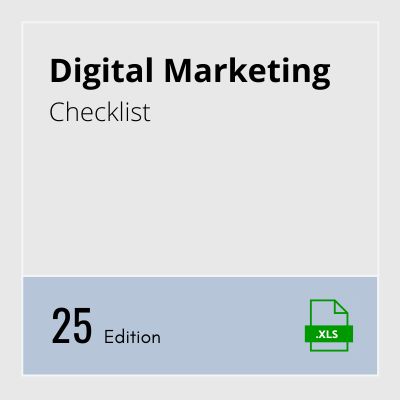The healthcare industry is in constant motion, not just on the clinical side but behind the scenes in administration and finance. As patient care becomes more complex and regulations evolve, healthcare providers face increasing pressure to manage billing with precision and efficiency. That’s where medical billing solutions come in—streamlining processes, improving accuracy, and ultimately supporting a sustainable healthcare system.
While they may not receive the spotlight, medical billing systems are the backbone of healthcare financial operations. They ensure that healthcare organizations receive proper compensation for services delivered while maintaining compliance with payer requirements.
What Are Medical Billing Solutions?
Medical billing solutions are systems—typically software-based—that automate and manage the financial workflows related to patient care. They help healthcare providers handle tasks such as:
- Patient registration and insurance verification
- Coding diagnoses and procedures
- Charge capture and claims submission
- Payment posting and patient invoicing
- Denial management and appeals
- Financial reporting and analytics
These solutions work in tandem with electronic health records (EHRs), practice management tools, and payer networks to reduce manual work, increase reimbursement speed, and minimize costly errors.
Whether implemented in small practices or large hospital networks, medical billing solutions play a central role in keeping revenue cycles flowing smoothly.
Why Medical Billing Solutions Are Essential
The healthcare reimbursement environment is notoriously complex. With shifting payer guidelines, evolving coding standards, and growing patient financial responsibility, traditional billing methods are no longer sustainable. Medical billing solutions address these challenges head-on, offering a smarter way to manage revenue cycles.
1. Increase Billing Accuracy
Manual billing is time-consuming and prone to error. Even small mistakes—like a mistyped code or a missing modifier—can lead to claim rejections. Billing solutions reduce these issues by auto-validating data, applying coding logic, and flagging inconsistencies before claims are submitted.
2. Speed Up the Revenue Cycle
Delayed payments are one of the most common financial challenges for healthcare providers. Medical billing solutions accelerate the process by automating claim generation, tracking payment status, and handling remittance posting—all with less human intervention.
3. Improve Denial Management
Denied claims are a major drain on time and resources. Smart billing systems track denial patterns, identify root causes, and help staff prioritize appeals. This proactive approach reduces the chance of repeat denials and increases collections over time.
4. Support Compliance
With regulations like HIPAA and ongoing coding updates such as ICD-10 or CPT revisions, compliance is always a moving target. Many billing platforms are designed to stay current with rule changes, reducing the risk of noncompliance and associated penalties.
5. Enhance Financial Reporting
Data-driven decision-making is only possible with reliable insights. Billing solutions offer real-time reporting dashboards, enabling administrators to monitor key performance indicators (KPIs) like denial rates, days in accounts receivable, and collection ratios.
Key Features to Look for in Medical Billing Solutions
Not all billing systems are created equal. Effective medical billing solutions often include the following features:
- Automated Claims Processing: Reduce manual entry and streamline payer submission.
- Coding Assistance: Suggest or validate appropriate ICD-10, CPT, and HCPCS codes.
- Real-Time Eligibility Checks: Confirm insurance coverage at the time of service.
- Patient Portals: Allow patients to view and pay bills online.
- Denial Analytics: Provide insights into common reasons for rejected claims.
- Customizable Reports: Track revenue performance by provider, payer, or service line.
- Integration Capabilities: Seamlessly connect with EHR and practice management systems.
The Changing Landscape of Medical Billing
As healthcare delivery evolves, so too must the tools that support it. Several trends are pushing the adoption and development of more sophisticated medical billing solutions:
– Telemedicine Expansion
The rise of virtual care has introduced new billing codes and payer requirements. Modern billing platforms must be able to handle telehealth-specific rules, including place-of-service codes and payer nuances.
– Patient Consumerism
With high-deductible plans becoming more common, patients now shoulder a larger portion of healthcare costs. Medical billing solutions must support transparent pricing, easy payment options, and proactive communication to improve patient satisfaction and collections.
– Automation and AI Integration
Artificial intelligence is making its way into medical billing, helping systems predict claim outcomes, optimize coding, and even draft appeal letters for denied claims.
– Data Security and Compliance
As cyber threats grow more sophisticated, billing platforms must prioritize data security and encryption, particularly when handling protected health information (PHI).
Practical Benefits for Healthcare Providers
Whether you’re managing a solo practice, a multi-specialty clinic, or a hospital department, medical billing solutions can deliver tangible benefits:
- For Small Practices: Automate tasks and reduce the need for large billing teams.
- For Group Practices: Centralize billing workflows and unify financial reporting.
- For Hospitals: Manage high volumes of inpatient and outpatient claims across multiple departments and payers.
The result is not just better billing—but better business operations overall.
Final Thoughts
Billing may not be the most visible part of healthcare, but it is undeniably one of the most vital. Without accurate, timely, and compliant billing practices, even the best care can be underfunded or delayed. That’s why medical billing solutions have become a cornerstone of modern healthcare operations.
By reducing errors, improving cash flow, and freeing up staff to focus on patients instead of paperwork, these tools are enabling healthcare providers to thrive in an increasingly complex environment. As technology continues to advance, the future of medical billing looks faster, smarter, and more connected—just like the care it’s designed to support.

